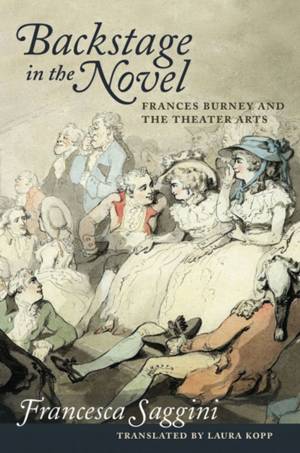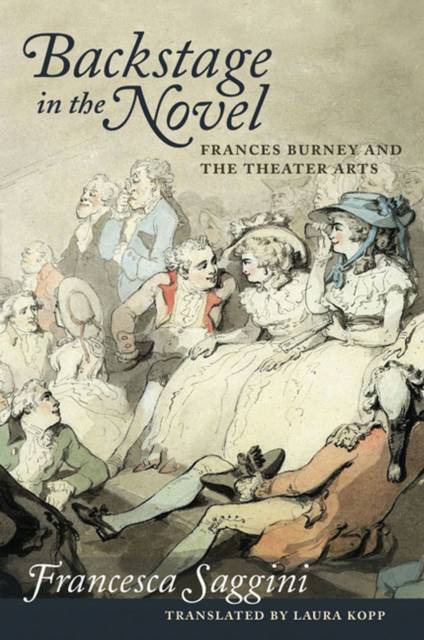
- Retrait gratuit dans votre magasin Club
- 7.000.000 titres dans notre catalogue
- Payer en toute sécurité
- Toujours un magasin près de chez vous
- Retrait gratuit dans votre magasin Club
- 7.000.0000 titres dans notre catalogue
- Payer en toute sécurité
- Toujours un magasin près de chez vous
Description
In Backstage in the Novel, Francesca Saggini traces the unique interplay between fiction and theater in the eighteenth century through an examination of the work of the English novelist, diarist, and playwright Frances Burney. Moving beyond the basic identification of affinities between the genres, Saggini establishes a literary-cultural context for Burney's work, considering the relation between drama, a long-standing tradition, and the still-emergent form of the novel.
Through close semiotic analysis, intertextual comparison, and cultural contextualization, Saggini highlights the extensive metatextual discourse in Burney's novels, allowing the theater within the novels to surface. Saggini's comparative analysis addresses, among other elements, textual structures, plots, characters, narrative discourse, and reading practices. The author explores the theatrical and spectacular elements that made the eighteenth-century novel a hybrid genre infused with dramatic conventions. She analyzes such conventions in light of contemporary theories of reception and of the role of the reader that underpinned eighteenth-century cultural consumption. In doing so, Saggini contextualizes the typical reader-spectator of Burney's day, one who kept abreast of the latest publications and was able to move effortlessly between "high" (sentimental, dramatic) and "low" (grotesque, comedic) cultural forms that intersected on the stage.
Backstage in the Novel aims to restore to Burney's entire literary corpus the dimensionality that characterized it originally. It is a vivid, close-up view of a writer who operated in a society saturated by theater and spectacle and who rendered that dramatic text into narrative. More than a study of Burney or an overview of eighteenth-century literature and theater, this book gives immediacy to an understanding of the broad forces informing, and channeled through, Burney's life and work.
Spécifications
Parties prenantes
- Auteur(s) :
- Editeur:
Contenu
- Nombre de pages :
- 344
- Langue:
- Anglais
Caractéristiques
- EAN:
- 9780813932545
- Date de parution :
- 31-05-12
- Format:
- Livre relié
- Format numérique:
- Genaaid
- Dimensions :
- 157 mm x 234 mm
- Poids :
- 612 g

Les avis
Nous publions uniquement les avis qui respectent les conditions requises. Consultez nos conditions pour les avis.






